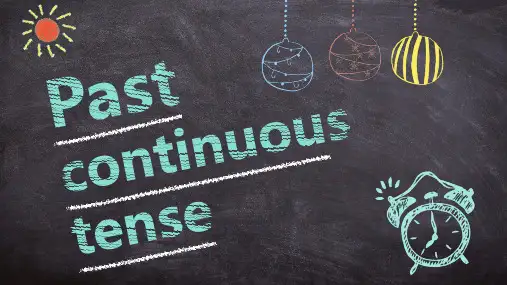ThePastContinuousTense过去进行时英语课件
- 格式:ppt
- 大小:1.81 MB
- 文档页数:30

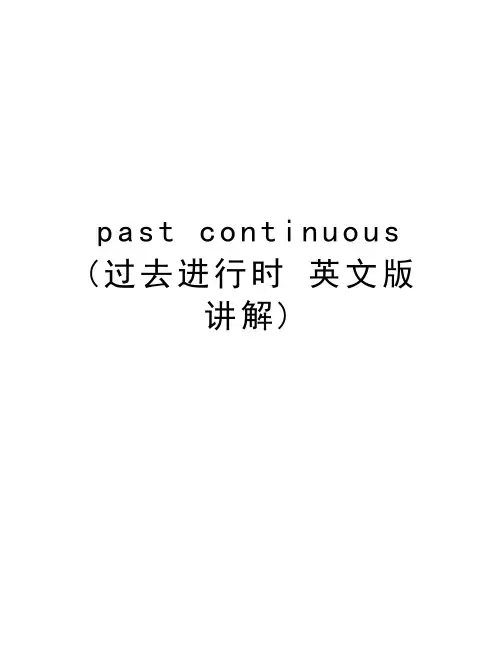
p a s t c o n t i n u o u s (过去进行时英文版讲解)Past Continuous Tense1.The Past Continuous tense is an important tense in English. We use it to say whatwe were in the middle of doing at a particular moment in the past.2.Structure:●The past progressive tense(also sometimes called "past continuous") isformed by using was/were + main verb + ing (was/were doing), as in, "We were eating dinner when the phone rang."●Verbs usually cannot be used in past continuous tense:agree、be、believe、belong、care、forge、hate、have、hear、know、like、love、mean、mind、notice、own、remember、seem、suppose、understand、want、wish, etc. Example:Wrong:I was knowing the answer. (×)Right:I knew the answer. ( √ )3.Temporal Adverbials:this morning、the whole morning、all day yesterday、from nine to ten last evening、when、while, etc.(+) Positivesentence(-)Negativesentence(?)Generalquestion(?)Specialquestion5.How to use the Past Continuous Tense1)The Past Continuous tense expresses action at a particular moment in thepast. The action started before that moment but has not finished at that moment. For example, “y esterday I watched a film on TV. The film started at 7pm and finished at 9pm”. Thus, “At 8pm yesterday, I was watching TV.”When we use the Past Continuous tense, our listener usually knows or understands what time we are talking about. Look at these examples:●I was working at 10pm last night.●What were you doing at 10pm last night?●What were you doing when he arrived?(“when he arrived" is also a way of defining the time)●She was cooking when I telephoned her.●We were having dinner when it started to rain.2)It's also common to use this tense to talk about two on-going actions thatwere happening at the same time in the past, as in,"While Justin Timberlake was finishing his new album, his fans were waiting for it to come out."3)We can also use this tense to talk about actions in the past that took placeover time, as in,"I couldn't sleep last night because dogs were barking the whole night." NOTICE:·when + short action (Past Simple)·while + long action (Past Continuous。
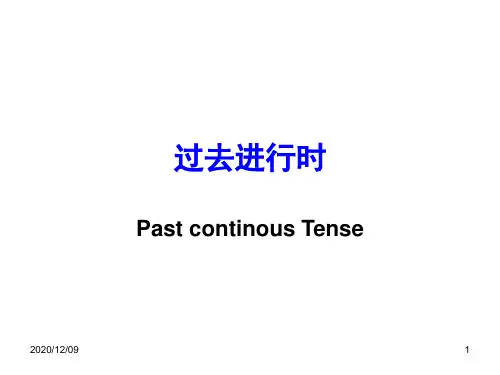

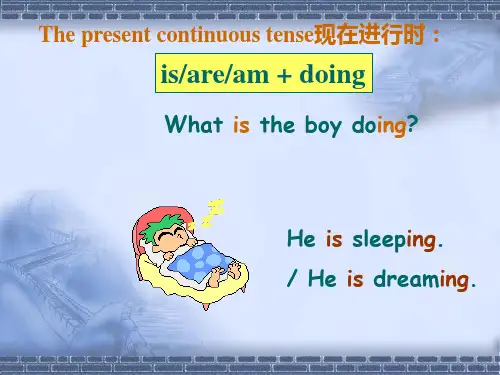
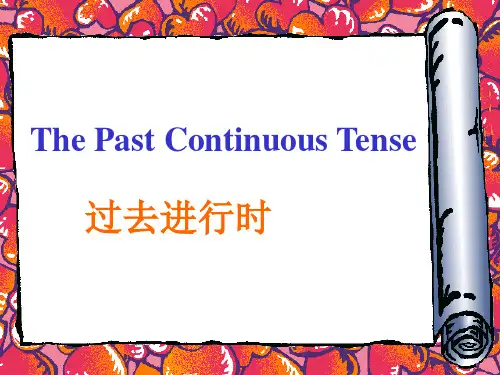
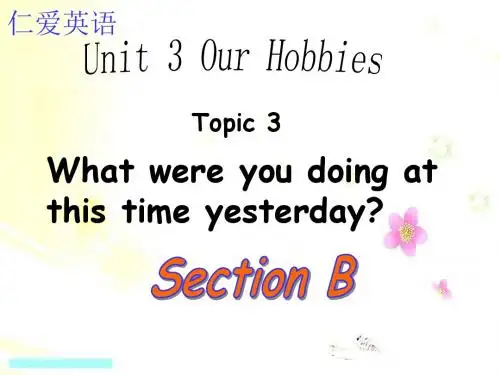
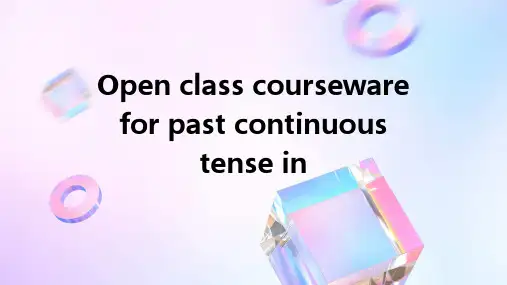
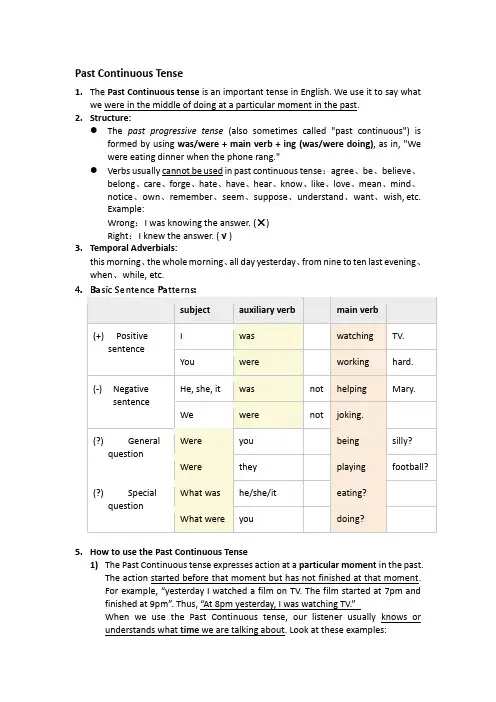
Past Continuous Tense1.The Past Continuous tense is an important tense in English. We use it to say whatwe were in the middle of doing at a particular moment in the past.2.Structure:●The past progressive tense(also sometimes called "past continuous") isformed by using was/were + main verb + ing (was/were doing), as in, "Wewere eating dinner when the phone rang."●Verbs usually cannot be used in past continuous tense:agree、be、believe、belong、care、forge、hate、have、hear、know、like、love、mean、mind、notice、own、remember、seem、suppose、understand、want、wish, etc.Example:Wrong:I was knowing the answer. (×)Right:I knew the answer. ( √ )3.Temporal Adverbials:this morning、the whole morning、all day yesterday、from nine to ten last evening、when、while, etc.4.(+) Positivesentence(-)N egativesentence(?)Generalquestion(?)Specialquestion5.How to use the Past Continuous Tense1)The Past Continuous tense expresses action at a particular moment in the past.The action started before that moment but has not finished at that moment.For example, “yesterday I watched a film on TV. The film started at 7pm and finished at 9pm”. Thus, “At 8pm yesterday, I was watching TV.”When we use the Past Continuous tense, our listener usually knows or understands what time we are talking about. Look at these examples:●I was working at 10pm last night.●What were you doing at 10pm last night?●What were you doing when he arrived?(“when he arrived" is also a way of defining the time)●She was cooking when I telephoned her.●We were having dinner when it started to rain.2)It's also common to use this tense to talk about two on-going actions that werehappening at the same time in the past, as in,"While Justin Timberlake was finishing his new album, his fans were waiting for it to come out."3)We can also use this tense to talk about actions in the past that took place overtime, as in,"I couldn't sleep last night because dogs were barking the whole night." NOTICE:·when + short action (Past Simple)·while + long action (Past Continuous。
